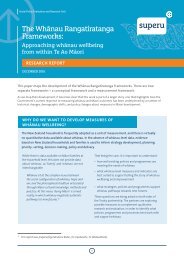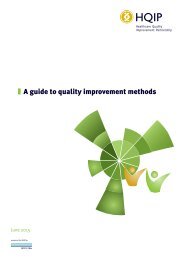2fyY1Py
2fyY1Py
2fyY1Py
You also want an ePaper? Increase the reach of your titles
YUMPU automatically turns print PDFs into web optimized ePapers that Google loves.
46. Guiding principles on business and human rights: implementing the United Nations “Protect, respect, and remedy”<br />
framework. New York, NY: United Nations; 2011.<br />
47. Children’s rights and business principles. New York, NY: UNICEF, United Nations Global Compact, Save the Children;<br />
2012.<br />
48. Children’s rights and business principles: good practices per principle. New York, NY: United Nations Global Compact;<br />
2015.<br />
49. Students, computing, and learning: making the connection. Paris: Organisation for Economic Co-operation and<br />
Development; 2015:40 Fig. 1 (http://www.oecd.org/publications/students-computers-and-learning-9789264239555-<br />
en.htm).<br />
50. Children and parents: media use and attitudes report. London: Ofcom; 2015 (http://stakeholders.ofcom.org.uk/<br />
market-data-research/other/research-publications/childrens/children-parents-nov-15/).<br />
51. Coughlan S. Time spent online “overtakes TV” among youngsters. BBC News, 26 January 2016 (http://www.bbc.com/<br />
news/education-35399658, accessed 6 August 2016).<br />
52. Mascheroni G, Ólafsson K. Net children go mobile. Risks and opportunities. 2nd edition. Milan: Educatt; 2014.<br />
53. Major shift in UK children’s behaviour as time online overtakes time watching TV for first time ever, reveals new<br />
report. Norwich, Norfolk: Childwise; 2016 (http://www.childwise.co.uk/uploads/3/1/6/5/31656353/childwise_press_<br />
release_-_monitor_2016.pdf).<br />
54. Tablet users in central & eastern Europe, by country, 2014–2020. emarketer, 29 March 2016 (http://www.emarketer.<br />
com/Article/Eastern-European-Tablet-Market-Grows-by-Double-Digits/1013760?ecid=NL1002).<br />
55. Livingstone S, Haddon L, Görzig A, Ólafsson K. Risks and safety on the internet: the perspective of European children.<br />
Full findings. London: London School of Economics, EU Kids Online; 2011.<br />
56. Sozio ME, Ponte C, Sampaio IV, Senne F, Ólafsson K, Alves SJ, et al. (2015). Children and Internet use: a comparative<br />
analysis of Brazil and seven European countries. London: London School of Economics, EU Kids Online; 2015 (http://<br />
www.lse.ac.uk/media@lse/research/EUKidsOnline/ParticipatingCountries/PDFs/BR-FullReportBrazilNCGM.pdf).<br />
57. The age of digital enlightenment. Realtime generation report 2016. Slough, Berkshire: Logicalis; 2016 (http://www.<br />
uk.logicalis.com/globalassets/united-kingdom/microsites/real-time-generation/realtime-generation-2016-report.pdf).<br />
58. Coughlan S. Safer Internet Day: Young ignore “social media age limit”. BBC, 9 February 2016 (http://www.bbc.com/<br />
news/education-35524429).<br />
59. Lapenta GH, Jørgensen RF. Youth, privacy and online media: framing the right to privacy in public policy-making. First<br />
Monday 2015;20(3) (http://firstmonday.org/ojs/index.php/fm/article/view/5568/4373).<br />
60. Kids Ontrack. London: SuperAwesome; 2013 (in-house report).<br />
61. Boyd d (2014a). It’s complicated. The social lives of networked teens. New Haven: Yale University Press; 2014.<br />
62. Snapchat uptake varies among Europe’s teens. emarketer, 8 June 2015 (http://www.emarketer.com/Article/Snapchat-<br />
Uptake-Varies-Among-Europes-Teens/1012567).<br />
63. Gibs J, Bruich S. Advertising effectiveness: understanding the value of a social media impression. A Nielsen/Facebook<br />
report. New York, NY; 2010 (http://www.nielsen.com/us/en/insights/news/2010/nielsenfacebook-ad-report.html).<br />
64. Kelly L, Kerr G, Drennan J. Avoidance of advertising in social networking sites: the teenage perspective. J Interactive<br />
Advertising 2010;10:12.<br />
65. Gaber HR, Wright LT. Fast-food advertising in social media. A case study on Facebook in Egypt. J Bus Retail Manage Res<br />
2014;9:52–63.<br />
66. Mehta KP, Coveney J, Ward P, Handsley E (2014). Parents’ and children’s perceptions of the ethics of marketing energydense<br />
nutrient-poor foods on the internet: Implications for policy to restrict children’s exposure. Public Health Ethics<br />
2014;7(1):21–34<br />
67. Tatlow-Golden M, Tracey L, Dolphin L. Who’s feeding the kids online? Dublin: Irish Heart Foundation; 2016.<br />
68. Fielder A, Gardner W, Nairn A, Pitt J. Fair game? Assessing commercial activity on children’s favourite websites and<br />
online environments. London: National Consumer Council and Childnet; 2007 (http://www.childnet.com/ufiles/fairgame-final.pdf).<br />
69. Cornish LS. “Mum, can I play on the internet?”. Int J Advertising 2014;33:437–73.<br />
70. Newman N, Oates CJ. Parental mediation of food marketing communications aimed at children. Int J Advertising<br />
2014;33:579–98.<br />
34






